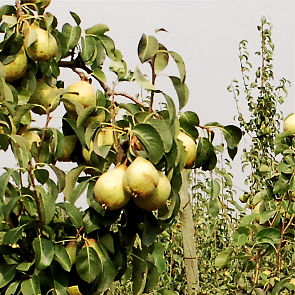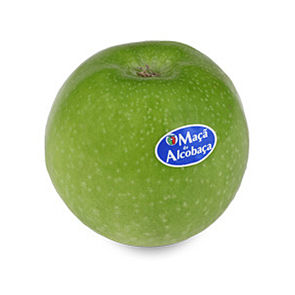Products

Apple
The apple tree is one of the oldest trees, belonging to the Rosaceae family, originating in Asia. It was one of the favourite fruits of the ancient Greeks and Romans, who took it to England. In turn, the English introduced it in America, where it especially took hold in Brazil, where the South Region is a large-scale apple producer.
Today China is the biggest producer in the world, followed by the United States, Turkey, Italy and Poland. There are over 7000 species cultivated all over the world. The most common varieties are: Royal Gala, Fuji, Red and Golden Delicious.
Why should we eat apples?
Apples can be eaten in their entirety. The biggest concentration of vitamin C, fibres and antioxidants are in the skin, which is a part most consumers dispense with. They are rich in vitamins (A, B1, B2, C and E) and mineral salts such as calcium, copper, iron, phosphorous, magnesium and potassium.
The fruit is also a source of soluble and insoluble fibres and contains phytochemicals such as phenols, beta-carotene and flavonoids, including quercetin and phlorizin (which play an important role in fighting cancer and heart disease).

Rocha Pear
This Portuguese variety derives from a seed originating in Sintra Council in 1836, and which was propagated in other regions of the country, especially in the West region.
The variety requires a moderately cold environment in the autumn-winter period, flowering in April. It tends to produce seedless fruit (a characteristic of the variety), mainly of medium size, and has a distinctive russet skin, especially around the base and in the stem cavity.
The Rocha pear is highly resistant to handling and transport, and may be conserved in normal refrigerators for 4 to 5 months, and for more time in controlled atmosphere chambers. Another aspect is the longevity of the pears until consumption: after being packaged and stored at room temperature they are ready for consumption for 5 to 8 days, sometimes longer.
Characteristics of the variety
The fruit from the “Rocha” pear tree has the following characteristics:
• Shape: Variable, predominantly a rounded oval, classic pear-shaped or oblong pear-shaped. It has no base cavity apart from in the oval oblong pear-shaped varieties, where this is often seen albeit only a shallow cavity. It has a very shallow stem cavity with a clear crown, smooth surface and diverging rosette.
• Stalk: on average measuring between 28mm and 33mm.
• Russet skin: all the formats of the Rocha Pear of the West contain russet skin, with its percentage and concentration varying depending on the climatic conditions of the year. It is a typical characteristic of this variety. The russet colour is prevalent at the base, and dispersed in irregular fashion all over the surface and tending to concentrate in the stem cavity.
• Surface: smooth.
• Skin colour: yellow and/or light green, at times containing a slightly pink tinge on the side that is exposed to the sun. Clear russet-coloured speckles.
• Average size: 60/65 mm, with an average weight of 130g.
• Pulp: white, soft and soluble, granular, sweet, non-acidic and juicy. Very sweet and lightly scented aroma.
• Conservation properties: excellent, when compared to other varieties.

Golden Delicious Apple
Of American origin, it is an oblong-conical shaped apple with a yellow/green skin, occasionally containing orange-coloured streaks. The pulp is light cream coloured, sweet, juicy and firm.

Casanova de Alcobaça Apple
Of Portuguese origin, it has an oblong conical or cylindrical conical shape. Its skin is mainly made up of red and yellow streaks. The pulp is white, bittersweet, moderately juicy and firm.

Reineta Apple
Of French origin it has a rounded and flat shape. It has a rough light brown surface. The pulp is light cream coloured, contains little juice, very acidic and firm.

Red Delicious Apple
Also of American origin, it has a cylindrical conical or oblong conical shape and its skin is predominantly dark red. The pulp is light cream coloured, sweet, non-acidic, moderately juicy and firm. Its most well-known sub-variety is the Starking.

Fuji Apple
Of Japanese origin, it has a flat shape. The skin is bright red with a blend of red and yellow-green streaks. The pulp is white, very juicy, sweet and firm.

Jonagold Apple
Of American origin, it has a rounded shape. Its skin has two colours, with an orange-red background colour and yellow streaks. The pulp is bittersweet, juicy and moderately firm.

Royal Gala Apple
Originally from New Zealand, it has an oblong rounded shape and its skin colour has several splashes of bright red interspersed with orange tones. The pulp is almost white, very sweet, non-acidic, juicy and firm.

Granny Smith Apple
Originally from Australia and with a rounded globe-like shape. Its skin is completely and intensely green. The pulp is white, very juicy, acidic and it is extremely firm.




